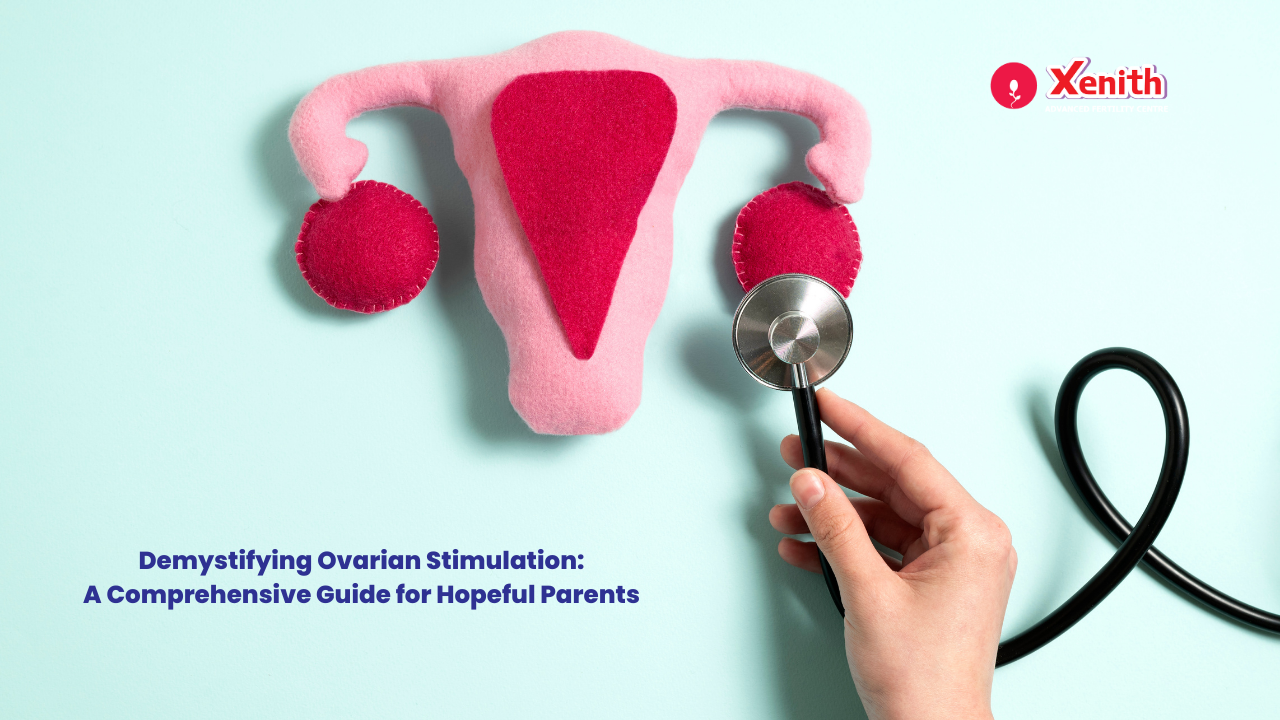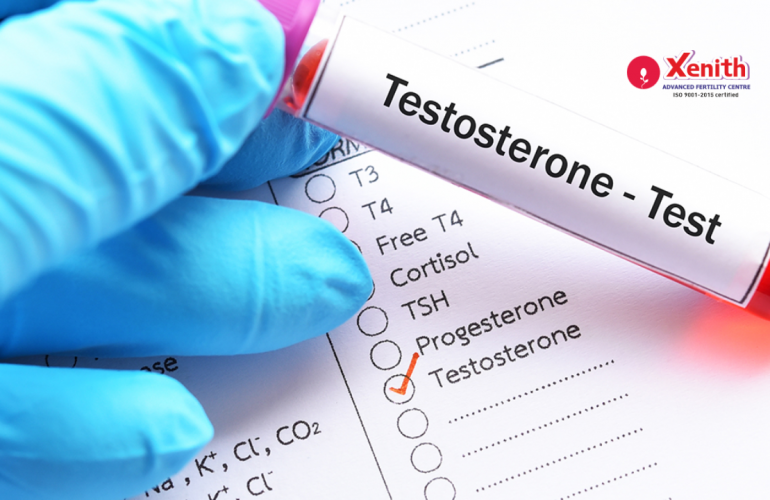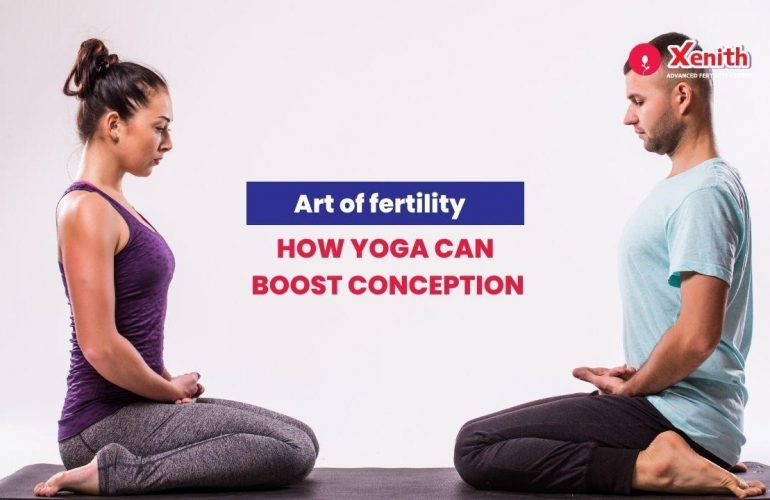Ovarian stimulation (OS) is a treatment that increases the number of eggs developing in a cycle with the aim of improving pregnancy rates because usually the ovaries release only one egg during ovulation each cycle. It is recommended for people dealing with infertility which means that a couple has been unable to conceive even after 1 year of having unprotected sex.
Assisted reproductive technologies like intrauterine insemination(IUI) or in vitro fertilization (IVF) have been used to improve conception rates with the help of ovarian stimulation. IUI is a procedure where the washed sperm is transferred to the woman’s uterus just when she is ovulating in order to conceive. IVF is a procedure where the woman’s eggs are retrieved from her ovaries, and placed with many sperm in a laboratory setting in order for fertilization to occur and the resulting embryo is then transferred back to the woman’s uterus for conception to occur. Sometimes in the case of severe male infertility, a single sperm is injected into an egg for fertilization to occur and this process is called ICSI or intracytoplasmic sperm injection. So, it’s beneficial to retrieve as many eggs by OS to improve the chances of conception via IVF.
Menstrual cycle explained
Day 1 of the menstrual cycle is the first day you get your period. The menstrual cycle has 2 main phases: the follicular phase which makes up the first 10-16 days of the cycle until ovulation and the luteal phase which begins right after ovulation and goes until the start of menstruation again. An average menstrual cycle goes for about 28 days. The cycle is regulated by the levels of various hormones some of which include luteinizing hormone (LH), follicle stimulating hormone (FSH), estrogen and progesterone. In the beginning of the follicular phase, the hypothalamus produces gonadotropin releasing hormone (GnRH) which will then cause the pituitary gland in the brain to release FSH which stimulates the growth and maturation of the follicles. The maturing follicles produce estrogen which then peaks a day before ovulation and stimulates an increase of LH. About 34-36 hours after the LH surge, ovulation occurs and the mature egg is released from the follicle around day 14. The LH levels drop whereas progesterone levels begin increasing to prepare the uterine lining in the uterus for possible implantation of a fertilized egg. In the absence of a fertilized egg, the progesterone levels start decreasing and the uterine lining also called the endometrium is shed beginning the next menstrual cycle.
How does ovarian stimulation work?
Prior to treatment, the fertility specialist will take a detailed medical history, conduct a physical exam, do an ultrasound of your ovaries and uterus, run various tests to predict how your ovaries will respond to various medications and also find out how many eggs are available. Age can be a big factor since the quantity and quality of eggs decline over time especially after age of 35. Anti Mullerian hormone (AMH) levels in the blood can predict the quantity (ovarian reserve) but not the quality of the eggs you have left in your ovaries. An ultrasound can also be done to evaluate the number of viable eggs in the ovaries. Since a female is born with all the eggs she will ever have and this number depletes over the lifetime and it is important to know how many eggs are left. Sometimes hormonal imbalances could lead to infertility. Levels of other hormones like LH, FSH, estrogen, progesterone and others are checked. Depending on the results of these various tests, your age, your body mass index, your medical history and other conditions, the doctor will adjust the medication and the protocol they will follow for your unique circumstances.
On Day 1 of the cycle, they might do some baseline bloodwork and ultrasound. After this, the treatment will begin and the length of the stimulation will depend on how the follicles respond as per the bloodwork and ultrasound results. They will begin treatment with gonadotropins to stimulate development of multiple follicles. Usually, many follicles will die in the beginning of the menstrual cycle and the aim is to enable these follicles to continue growing by stimulating them. With multiple follicles developing at the same time, there is a risk of premature ovulation. So other medications will be used to make sure that ovulation occurs at the right time. An injection of another hormone will be needed to trigger ovulation 36-38 hours before egg retrieval in order for the doctor to precisely time the retrieval. They will aim to retrieve between 8 to 15 eggs because it’s a fine balance between the risk of ovarian hyperstimulation syndrome (OHSS), having multiple pregnancies which could risk health of both mother and babies, and risking the chance of having a high quality embryo. OHSS is an adverse response from having excess hormones and too many follicles developing, leading to swelling and pain in the ovaries along with other symptoms. If less than 4 eggs are to be retrieved, it might be considered a poor response to stimulation.
The ovarian stimulation could last between 8 to 13 days and you will need to take daily injections and go often for blood tests and ultrasound so that the follicles could be closely monitored.
What medications are used?
Fertility drugs are medications that can stimulate or control ovulation. Here are some that are used:
- Clomiphene citrate- increase the FSH levels secreted by the pituitary gland.
- Synthetic Human Chorionic Gonadotropin (hCG)- induce ovulation
- FSH- stimulate follicle growth in the ovaries
- Gonadotropin-Releasing Hormone (GnRH)-used to stimulate the pituitary gland to secrete LH and FSH.
- GnRH agonist-suppresses ovulation
- GnRH antagonist-binds GnRH receptors and prevents premature ovulation.
- Progesterone- given after egg retrieval to make implantation more successful.
Lifestyle and self care
There are some things you can do to improve the outcome of ovarian stimulation. Some of these include getting moderate exercise, maintaining a healthy weight, eating a healthy diet, stop smoking, taking proper medications for any health issues, getting enough sleep, and reducing stress. You can also read up on ovarian stimulation and ask your doctor any unanswered questions. You can get emotional support from your partner, close friends or family, a counsellor or join a support group. Ovarian stimulation can improve the odds of conception by maturing many eggs at one time. The experts at Xenith Advanced Fertility Centre are very well qualified to help you along on the journey to parenthood. Feel free to contact them if you have any questions about ovarian stimulation or any other topics about fertility.




